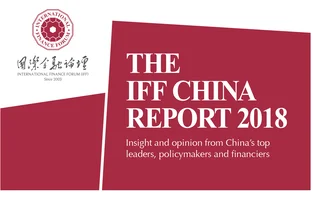
Mutual benefits – Bay area development in China and the US
Rick Niu, president and chief executive officer of Starr Strategic Holdings and partner at Starr Finance, examines what China can learn from the experience of the US of bay area development in New York and San Francisco, and sees advantages accruing to both countries as China’s own Bay Area Development continues to surge forward


In their attraction of talent, venture incentives and construction of legal and regulatory infrastructure, US bay areas have exerted a powerful influence on the Guangdong–Hong Kong–Macao Greater Bay Area (the Bay Area Development). Economic and trade co-operation between China and the US will be mutually beneficial to their respective bay areas.
When comparing New York’s bay area on the east coast with San Francisco’s on the west coast, similarities and differences become apparent. One aspect the two areas have in common is that a large proportion of their economic output – between 80% and 85% – comes out of the real economy, particularly the services industry. Disparities between the two are also noteworthy. They are distinguished by their progress along very divergent development paths – San Francisco towards the technology, agriculture and wine industries, among others, and New York specialising in media, international trade and biotechnology.
Learning from US problems in bay area construction
The US has many lessons to teach China about bay area construction, not least from these major problems that were overcome:
- A far from ideal business environment – New York and California have traditionally been high-tax, less business-friendly states.
- Instability fostered by the political gamesmanship of the Republican and Democratic parties have resulted in a lack of policy continuity.
- High living expenses.
- Increasing financial supervision following the financial crisis, which has jeopardised the innovation and sound development of local markets.
- Compared with the Midwest and southern states, the mechanisms for encouraging innovation were insufficient in bay areas.

These shortcomings brought about the loss of some competitive advantages for the two US bay areas, and allowed the Midwest and southern inland areas to compete more successfully. It is, therefore, necessary to attach great importance to the top-level design and practical policies of the Bay Area Development.
Diversity between the local idiosyncrasies of a bay area and those of the neighbouring regions is key to bay area construction. It is particularly crucial in formulating policies and creating incentives to start-up enterprises and raise capital in accordance with local social and economic realities. Although China and the US have starkly different ideologies and outlooks, their economic interactions and exchanges can be stimulated by the burgeoning growth of the Bay Area Development.
Future China-US co-operation
The Bay Area Development requires preferential national policies to encourage its progress. With further ‘opening‑up’ and liberalisation in the financial sector following the 19th National Congress of the Communist Party of China, a large number of supportive financial policies are expected be promulgated. The Bay Area Development should seek their proliferation, and strive to be a beacon for China to attract greater attention and investment from the US and other Western countries.
Provinces and cities in China have accumulated hard-won experience and achieved great success in attracting foreign investment. In doing so, they have prioritised ‘bringing in’ rather than ‘Going Out’. However, drawing on the experience of US bay area construction, insight has been drawn and it can be inferred that a Go Out policy ensures more successful bringing in. The Bay Area Development should therefore follow the principle of formulating foreign strategies that encourage the simultaneous capture of both these objectives.
The Bay Area Development could become the focal point of interest for China-US co-operation in the construction of the Belt and Road Initiative (BRI). The Trump administration may have withdrawn the US from the Trans-Pacific Partnership, given up its initiative in the Asia-Pacific region, and expressed only scepticism of the BRI, but many US enterprises are, in contrast, eager to participate in the BRI. The Bay Area Development is able to lend a cutting edge to market and capital approaches, and involving US enterprise and capital in the BRI would lead to positive effects by enhancing mutual commercial benefits in the two countries.
Only users who have a paid subscription or are part of a corporate subscription are able to print or copy content.
To access these options, along with all other subscription benefits, please contact info@centralbanking.com or view our subscription options here: subscriptions.centralbanking.com/subscribe
You are currently unable to print this content. Please contact info@centralbanking.com to find out more.
You are currently unable to copy this content. Please contact info@centralbanking.com to find out more.
Copyright Infopro Digital Limited. All rights reserved.
As outlined in our terms and conditions, https://www.infopro-digital.com/terms-and-conditions/subscriptions/ (point 2.4), printing is limited to a single copy.
If you would like to purchase additional rights please email info@centralbanking.com test test test
Copyright Infopro Digital Limited. All rights reserved.
You may share this content using our article tools. As outlined in our terms and conditions, https://www.infopro-digital.com/terms-and-conditions/subscriptions/ (clause 2.4), an Authorised User may only make one copy of the materials for their own personal use. You must also comply with the restrictions in clause 2.5.
If you would like to purchase additional rights please email info@centralbanking.com test test test







